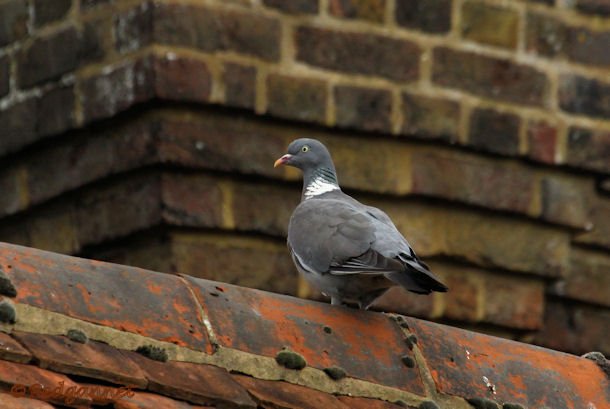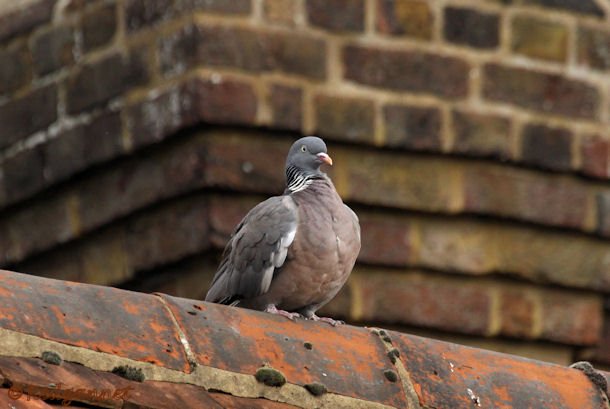
It may be considered to be a trash bird by some. It is certainly thought of as a pest as far as farmers are concerned. But the Common Woodpigeon is one of the easiest ticks for any American birder passing through the UK. It can be seen anywhere there are trees or meadows. It can be seen on street lamps and crossing over motorways. Even gazing wistfully from a transit lounge will probably turn up a Columba palumbus.
It is a large, abundant pigeon whose numbers are swollen by European migrants during the winter. Closely related to the Feral Pigeon and Stock Dove, the woodpigeon (we seldom bother with the pre-fix) is easily recognised by its large size, white neckpatch and the white, transverse bars on its wings. In fact, so large and abundant is it, that French hunters often cross La Manche to shoot birds in Kent and no-one seems to mind.The only other likely Columbidae would be the Eurasian Collared Dove and European Turtle Dove. At distance, flocks are looser and far less synchronised that Feral pigeons.
A woodpigeon often sits on my roof, near the chimney. This appears to be a favoured spot from which to call. and a peculiarity of my old house channels the sound down the flue and into the living room where the fireplace acts as a sounding horn. Their call is a hoarse, throaty, 5-syllable; I’m a pi-geon yes/ I’m a pi-geon are/ you a pi-geon too? The emphasis is on the first note of the phrase with a slight gathering of speed as the tone of the note drops. An auditory illusion makes the stress appear to come on the second syllable as the phrases run into one another.
An American birder might consider a hybrid with the size (actually, slightly bigger) of a Band-tailed Pigeon and the wing pattern of a White-winged Dove. Add a broad, dark tail band and you pretty much have a woodpigeon.
Tick.
















Beautiful Bird, thanks for ur information.. its so useful.. I love it!
Quite tasty too…